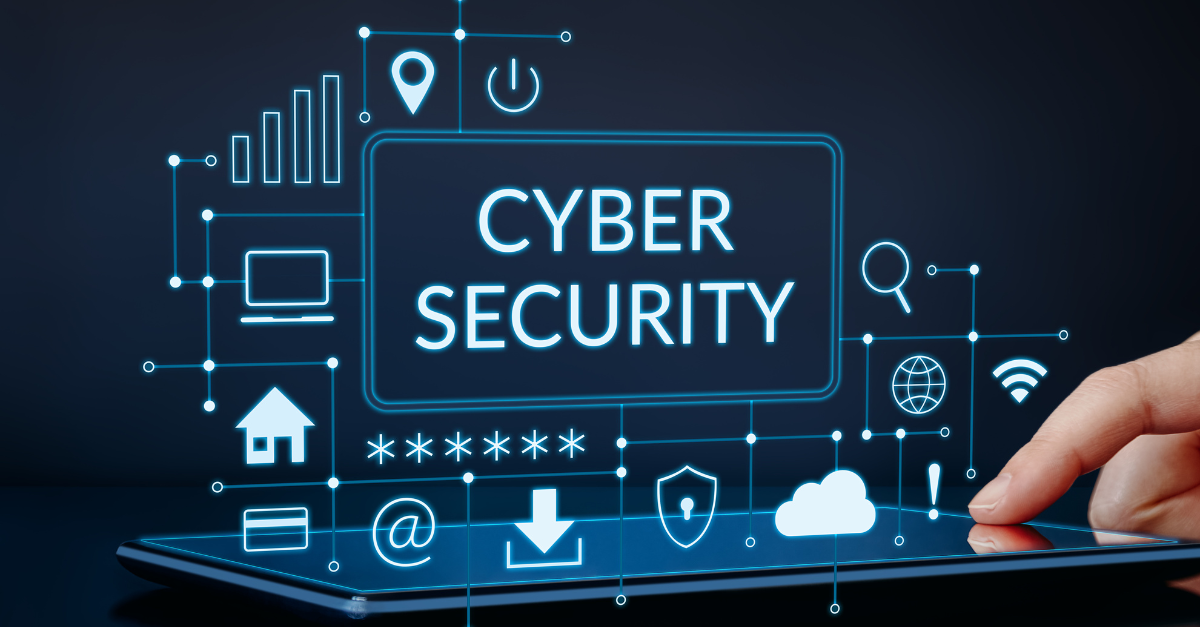15 Alarming Cybersecurity Facts And Statistics

15 Alarming Cybersecurity Facts And Statistics
The advent of the digital age has brought about a significant transformation in the operational dynamics of enterprises, wherein the internet and technological advancements have assumed a pivotal position in almost all facets of contemporary business practices. Nevertheless, the progress in technology brings forth a heightened susceptibility to cyber assaults and breaches of data, jeopardizing both corporations and their clientele. Several essential cyber security facts have been established that firms should be cognizant of in order to safeguard data security.

In light of the dynamic and more intricate nature of cyber threats, it is imperative for enterprises to adopt comprehensive cybersecurity protocols in order to safeguard themselves against potential attacks.
Key Cyber Security Facts And Statistics You Should Know
Let us proceed to examine the statistics pertaining to cyber security.
1. Hacking Attacks Are on the Rise
Threat actors have consistently posed a significant risk to businesses. However, due to the exponential advancement of technology in recent times, instances of cyber attacks have witnessed a substantial increase in both frequency and complexity.
Based on recent data, the frequency of attacks is observed to occur at an interval of approximately 39 seconds. One of the cyber security figures that is likely to cause concern among entrepreneurs.
2. Government, Technology, and Retail Are Some of the Most Affected
While it is true that all industries face the possibility of a cyber assault, certain industries are more vulnerable than others. Governments, technological organizations, and retail businesses have been susceptible to cyber attacks in recent years.
In the year 2016, it was projected that a significant majority of approximately 95% of breached records originated from three specific sectors. The primary factor contributing to this phenomenon is the vast volume of data retained by these entities, coupled with the delicate nature of the material in question.
3. Data Breaches Are Extremely Costly
Data breaches of all forms impose significant costs on businesses, both in terms of time and resources, as well as their financial performance.
According to projections, it is anticipated that the annual financial burden on firms resulting from cyber-attacks will reach a staggering $10.5 trillion by the year 2025. The funds in question possess the potential to facilitate innovative endeavors, enhance corporate operations, and establish a more robust and secure future for both enterprises and their clientele.
4. Small Businesses Are Especially Vulnerable
The heightened vulnerability of small enterprises to cyber-attacks might be attributed to their limited allocation of resources towards cybersecurity.
Indeed, it is noteworthy that a significant proportion of cyber attacks, namely 43%, are specifically targeted towards small firms. It is imperative for individuals operating small businesses to prioritize data protection and allocate resources toward implementing effective cybersecurity measures to ensure the security of their enterprise.
5. The Health Sector Is a Major Target
In recent times, the healthcare industry has been a significant focal point for malicious actors. During the pandemic period, there was a notable increase in the frequency of attacks specifically aimed at the sector. With the increasing number of individuals seeking healthcare services online, malicious actors have identified a potential avenue to exploit and acquire confidential data.
In aggregate, malevolent entities have illicitly acquired a total of 29 million data records on an annual basis since the year 2020. The use of proactive steps to prevent assaults is vital for firms operating within the healthcare industry.
6. COVID-19 Led to an Increase in Attacks
The global pandemic has profound and far-reaching consequences on a worldwide scale, encompassing both economic and social spheres. In response to the challenges faced by organizations, the adoption of remote work policies was observed.
Nevertheless, this transition presented cybercriminals with a favorable chance to exploit enterprises seeking to sustain their activities while reducing expenses.
Indeed, subsequent to the onset of the COVID-19 pandemic, there was a notable surge of 300% in the frequency of attacks. This particular cyber security phenomenon is one that we would prefer had not occurred, yet unfortunately, it has.
7. Phishing Attacks Are a Major Threat
Cybercriminals possess a wide array of techniques at their disposal for infiltrating the information systems of organizations. Nevertheless, phishing stands out as one of their preferred strategies. This entails the act of crafting an email that exhibits the characteristics of a trustworthy origin, however is designed to deceive others into divulging confidential data, such as passwords or banking credentials.
Indeed, it has been observed that a significant proportion, up to 90%, of data breaches transpire due to the perpetration of phishing assaults. In order for a company to maintain its security, it is imperative to exercise vigilance in detecting and mitigating phishing efforts, hence reducing the likelihood of succumbing to such fraudulent activities.
8. Human Errors Are Responsible for Most Breaches
Within the majority of firms, the primary responsibility for ensuring security predominantly lies with the employees. Nevertheless, such occurrences can result in security breaches, whether they are inadvertent errors or deliberate acts of malice.
Indeed, it has been shown that a significant majority, specifically 95%, of data breaches transpire due to human error. The errors encompass a spectrum of actions, ranging from engaging with hazardous hyperlinks to succumbing to email-based fraudulent schemes.
9. Cybersecurity Awareness Training is the Best Defense Against Attacks
If the primary cause of data breaches is attributed to human factors, it may be inferred that security awareness training is the most effective means of mitigating cyber attacks.
According to a recent study, a significant majority of respondents, specifically 97%, reported having included cybersecurity training in their practices within the previous year. When employees possess the knowledge and skills to identify and prevent phishing, malware, and other forms of assaults, they contribute to the overall security of the firm.
10. Spending On IT Security Is On The Rise
Threat actors consistently refine their abilities and devise novel strategies for penetrating systems. The current situation presents a formidable task for organizations, as the imperative to allocate resources towards state-of-the-art cybersecurity measures has become increasingly evident.
Indeed, expenditures allocated to information technology security have reached an unprecedented peak. According to analysts’ projections, the aggregate expenditure on cybersecurity is anticipated to surpass $172 billion by the conclusion of 2022. A substantial portion of these funds will be allocated for the purpose of security awareness training.
11. The Use of IoT Devices Has Increased Tremendously
The utilization of Internet of Things (IoT) devices poses a significant cybersecurity risk to contemporary enterprises. When these devices are inadequately secured, they can be readily exploited by malicious actors to obtain unauthorized access to a company’s network.
Nevertheless, it is imperative for firms to undertake measures to guarantee the utmost security of the projected 75 billion IoT devices that are anticipated to be operational by the year 2025.
12. IT Security Personel Gap Is Widening
The presence of IT security experts plays a significant role in combating cyber threats. As the demand for these specialists continues to increase, there is a noticeable widening of the gap between supply and demand.
According to available data, the global workforce had a substantial number of vacant positions, anticipated to be approximately 3.5 million, throughout the year 2021. The scarcity will increasingly intensify in the forthcoming years. It is not surprising that positions in IT employees are currently ranked as the second highest-paying occupations.
13. A Majority of Organizations Have No IT Security Incident Response Plan
Despite the prevalence of cyber attacks, a considerable number of firms continue to lack a proficient incident response plan for IT security. Approximately 77% of firms globally do not own a plan of this nature.
In the event that a firm experiences a data breach and lacks a robust plan to manage the subsequent events, the potential ramifications can be highly detrimental.
14. Most Small Businesses Fail After a Breach
Very few instances of data breaches fail to cause any negative impact on a firm. Small enterprises are particularly affected by adverse circumstances. Approximately 60% of these companies cease operations within a six-month period subsequent to experiencing a cyber assault. A significant portion of the harm incurred can be attributed to financial repercussions. However, it is important to also take into account the potential impact on reputation.
Once a breach is disclosed to the public, the process of rebuilding trust among consumers and other stakeholders can prove to be exceedingly challenging. Lawsuits and penalties can have a detrimental impact on the ability of small firms to recuperate.
15. Most Companies Take Too Long to Detect a Breach
Experiencing a data breach is already a highly undesirable circumstance. However, in instances where an organization experiences a prolonged duration in detecting the attack, the resulting consequences can be exacerbated.
Regrettably, this is precisely the phenomenon observed in contemporary businesses. The majority of individuals require a period beyond six months to become aware of the fact that their computer systems or online accounts have been compromised by unauthorized parties.
During this period, malicious actors have the potential to cause significant harm. Cybercriminals have the capability to illicitly acquire confidential data and cause significant disruption to your network infrastructure. The significance of auditing and monitoring systems cannot be overstated.
In the event of potential vulnerabilities or a breach, prompt detection is crucial to facilitate timely response and mitigate potential harm, safeguarding the interests of the organization.
Take These Cyber Security Facts at the Point of Surging Cyber Threats
With the increasing frequency and complexity of cyber attacks, it is imperative for firms to prioritize cybersecurity in order to safeguard their data and ensure uninterrupted business operations.
The implementation of a comprehensive strategy is necessary, encompassing the allocation of resources towards advanced information technology security systems and the establishment of rigorous cybersecurity training initiatives for personnel.
In order to maintain a competitive advantage and safeguard against cyber risks, firms must adopt these measures, paying close attention to the facts and figures surrounding cyber security, and responding accordingly.
Are you seeking assistance from qualified experts to enhance the information technology security measures within your organization? Please do not hesitate to reach out to us at your earliest convenience to explore the ways in which our assistance can be of benefit to you.
We have a dedicated team of expert penetration testers cum security analysts who can guide you through enhancing the security posture against any current and prospective cyber threats that can cause harm to your digital assets via any means. For setting up a meeting with Craw Security’s expert security professionals, call +91-9513805401 and have a word with them at the earliest. We would like to confirm you all that Craw Security, which is the Best VAPT Solutions Provider in India is the sister company of News4Hackers, the Best Cybersecurity Info, and News Portal.
About The Author:
Yogesh Naager is a content marketer who specializes in the cybersecurity and B2B space. Besides writing for the News4Hackers blog, he’s also written for brands including CollegeDunia, Utsav Fashion, and NASSCOM. Naager entered the field of content in an unusual way. He began his career as an insurance sales executive, where he developed an interest in simplifying difficult concepts. He also combines this interest with a love of narrative, which makes him a good writer in the cybersecurity field. In the bottom line, he frequently writes for Craw Security.
Read More Article Here









